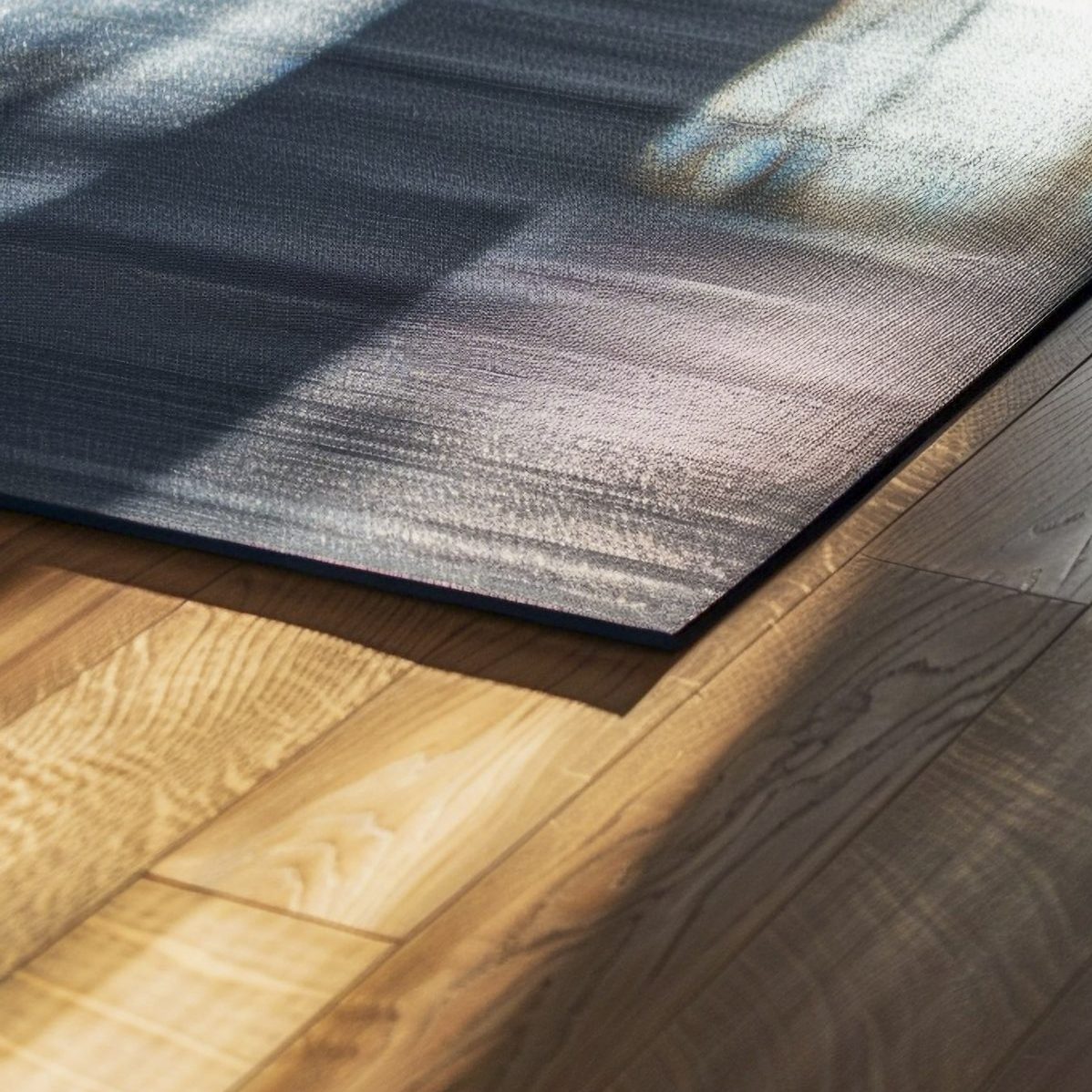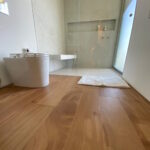- August 30, 2024
Hardwood vs. Carpet battel has a long history, however, you should choose one that meets your requirements.
Hardwood flooring is one of the most used flooring types. However, many people still consider carpet flooring as a competitive option. Well, there are many flooring types, however, each house and person has their preferences and needs. So we’ve decided to compare these two flooring options.
Key Takeaways
- Hardwood floors offer durability, aesthetic appeal, and easy maintenance but come at a higher cost.
- Carpet provides comfort, noise reduction, and cost-effectiveness but requires frequent cleaning and replacement.
- Consider factors such as cost, maintenance, environmental impact, and personal preferences when making your decision.
Pros and Cons of Hardwood Floors
Hardwood is a great flooring. Many homeowners choose hardwood, but at the same time, it comes with disadvantages as well.
Also Read: How Much Does Hardwood Flooring Cost in 2024?
Durability and Longevity
Hardwood floors are known for their long-lasting nature. With proper care, they can last up to 100 years. This durability makes them a valuable investment for your home. Additionally, hardwood can be refinished multiple times, restoring its original beauty even after years of wear and tear.
Feature | Hardwood Floors |
Lifespan | Up to 100 years |
Refinishing | Can be refinished |
Resale Value | High |
Maintenance | Moderate |
Aesthetic Value
The aesthetic appeal of hardwood floors is unmatched. They offer a classic and elegant look that can elevate any room’s design. The natural variations in wood grain and color add a unique charm to each plank, making your flooring truly one-of-a-kind.
Hygiene and Air Quality
Hardwood floors are a great option for those concerned about air quality and allergies. They do not trap dust, pollen, or other allergens, making them easier to clean and maintain. Regular sweeping and occasional damp mopping is usually sufficient to keep hardwood floors looking their best.
Pros and Cons of Carpet
While carpet is another top choice for homeowners, it also has some minor cons, and you should learn about them.
Also Read: How to Prepare for Carpet Installation: 8 Tips to Know
Comfort
The carpet is soft and warm underfoot, making it a comfortable choice for bedrooms and living areas. It provides a cozy feel and can be especially beneficial in colder climates, as it offers insulation against the cold.
Feature | Carpet |
Comfort | High |
Noise Reduction | Excellent |
Initial Cost | Low to moderate |
Maintenance | High |
Noise Reduction
Carpet is excellent at absorbing sound, making it a great choice for reducing noise in high-traffic areas or multi-story homes. This can create a quieter and more peaceful environment, especially in homes with children or pets.
Cost
Carpet is generally more affordable than hardwood, both in terms of material and installation costs. It is available in a wide range of prices, depending on the type and quality of the carpet fibers.
Maintenance
The carpet requires regular maintenance to keep it looking clean and fresh. This includes vacuuming at least once a week and occasional deep cleaning or shampooing to remove stains and dirt. The carpet is also more prone to wear and tear and typically needs to be replaced every 5-10 years.
Durability
While carpet offers comfort and noise reduction, it does not last as long as hardwood. The average lifespan of a carpet is between 5 to 10 years, depending on the quality and the level of foot traffic it receives.
Cost Comparison
Initial Costs
The initial cost of flooring is a crucial factor to consider. Hardwood floors generally have a higher upfront cost compared to carpet. The price varies depending on the type of wood, with softer woods like pine being more affordable and exotic hardwoods being the most expensive.
Flooring Type | Cost per Square Foot | Installation Cost | Total Cost (for 500 sq ft) |
Hardwood | $5 – $15 | $4 – $8 | $4,500 – $11,500 |
Carpet | $1 – $5 | $2 – $4 | $1,500 – $4,500 |
Long-Term Value
While hardwood floors have a higher initial cost, they offer excellent long-term value. They can last for decades and significantly increase the resale value of your home. On the other hand, carpet needs to be replaced more frequently, which can add up in terms of cost over time.
Example Scenarios
Consider the following scenarios to understand the cost implications better:
- Living Room (500 sq ft):
- Hardwood: Total cost ranges from $4,500 to $11,500.
- Carpet: Total cost ranges from $1,500 to $4,500.
- Bedroom (300 sq ft):
- Hardwood: Total cost ranges from $2,700 to $6,900.
- Carpet: Total cost ranges from $900 to $2,700.
Environmental Impact
Hardwood Floors
The environmental impact of hardwood floors depends largely on the sourcing and finishes used. Choosing sustainably sourced wood and low-VOC finishes can make hardwood flooring a more eco-friendly option.
Carpet
The environmental impact of carpets varies depending on the materials used. Natural fibers like wool are more eco-friendly but can be more expensive. Synthetic fibers like nylon and polyester are more affordable but have a higher environmental impact due to the chemicals used in their production.
Also Read: Laminate vs. Solid Hardwood: Which is Better?
Installation Process
Hardwood Installation
Installing hardwood floors typically requires you to hire a professional flooring installation company. The process involves measuring, cutting, and fitting the wood planks, followed by sanding and finishing. The installation can take several days to complete, depending on the size of the area.
Carpet Installation
Carpet installation is generally quicker and less complex than hardwood installation. However, it still requires professional expertise to ensure proper stretching and fitting. The process involves laying down padding, cutting the carpet to fit, and securing it in place.
DIY Considerations
For those considering a DIY approach, carpet installation might be more manageable due to the lower complexity. Hardwood installation, on the other hand, requires more specialized tools and skills, making it less suitable for DIY projects.
Appearance and Style Options
Hardwood Floors
Hardwood floors come in a variety of wood types, stains, and finishes. Common wood types include oak, maple, and cherry, each offering a unique grain pattern and color. Stains can range from light to dark, allowing you to customize the look to match your home decor.
Wood Type | Appearance | Durability |
Oak | Prominent grain, versatile | High |
Maple | Smooth grain, light color | Moderate to High |
Cherry | Rich, dark color | Moderate |
Carpet
Carpet offers a virtually unmatched range of colors, patterns, and textures. You can choose from materials like nylon, polyester, and wool, each offering different benefits. Patterned carpets can add visual interest to a room, while solid colors can create a cohesive look.
Carpet Material | Characteristics | Durability |
Nylon | Stain-resistant, durable | High |
Polyester | Soft, vibrant colors | Moderate |
Wool | Natural, eco-friendly | High |
Comfort and Insulation
Hardwood Floors
Hardwood floors are compatible with underfloor heating, providing warmth during colder months. To add comfort, you can use area rugs, which also help with noise reduction and protect the floor from scratches.
Carpet
Carpet provides natural insulation, making it a great choice for colder climates. It helps retain heat and provides a soft, cozy surface to walk on. This makes carpet ideal for bedrooms and living areas where comfort is a priority.
Cleaning and Maintenance
Hardwood Floors
Maintaining hardwood floors involves regular sweeping or vacuuming to remove dust and dirt. It’s essential to use the right cleaning products to avoid damaging the finish. Occasionally, hardwood floors may need refinishing to restore their original luster.
Carpet
Carpet requires more frequent maintenance, including regular vacuuming and periodic deep cleaning. Stains need to be addressed promptly to prevent permanent damage. High-traffic areas may need additional attention to keep
Cleaning and Maintenance (continued)
Hardwood Floors
Maintaining hardwood floors involves regular sweeping or vacuuming to remove dust and dirt. It’s essential to use the right cleaning products to avoid damaging the finish. Occasionally, hardwood floors may need refinishing to restore their original luster.
Carpet
The carpet requires more frequent maintenance, including regular vacuuming and periodic deep cleaning. Stains need to be addressed promptly to prevent permanent damage. High-traffic areas may need additional attention to keep the carpet looking its best.
Health and Safety Considerations
Hardwood Floors
Hardwood floors are generally hypoallergenic, making them a great choice for individuals with allergies. They do not trap dust, pollen, or pet dander, contributing to better indoor air quality.
Carpet
Carpet can trap allergens and dust, which may exacerbate allergies or respiratory issues. Regular cleaning and using hypoallergenic carpet padding can help mitigate these issues.
Conclusion
Choosing between hardwood floors and carpet depends on your personal preferences, lifestyle, and budget. Consider the pros and cons of each option and think about what matters most to you in terms of comfort, maintenance, and aesthetics. By weighing these factors carefully, you can make an informed decision that will enhance the beauty and functionality of your home.
F.A.Q.
Hardwood floors typically need refinishing every 7-10 years, depending on the level of foot traffic and wear. Many signs will help you understand whether it’s time to refinish or not.
The average lifespan of a carpet is between 5 to 10 years, depending on the quality and the level of foot traffic it receives.
While it is possible to install hardwood floors yourself, it requires specialized tools and skills. Professional installation is recommended for the best results.




